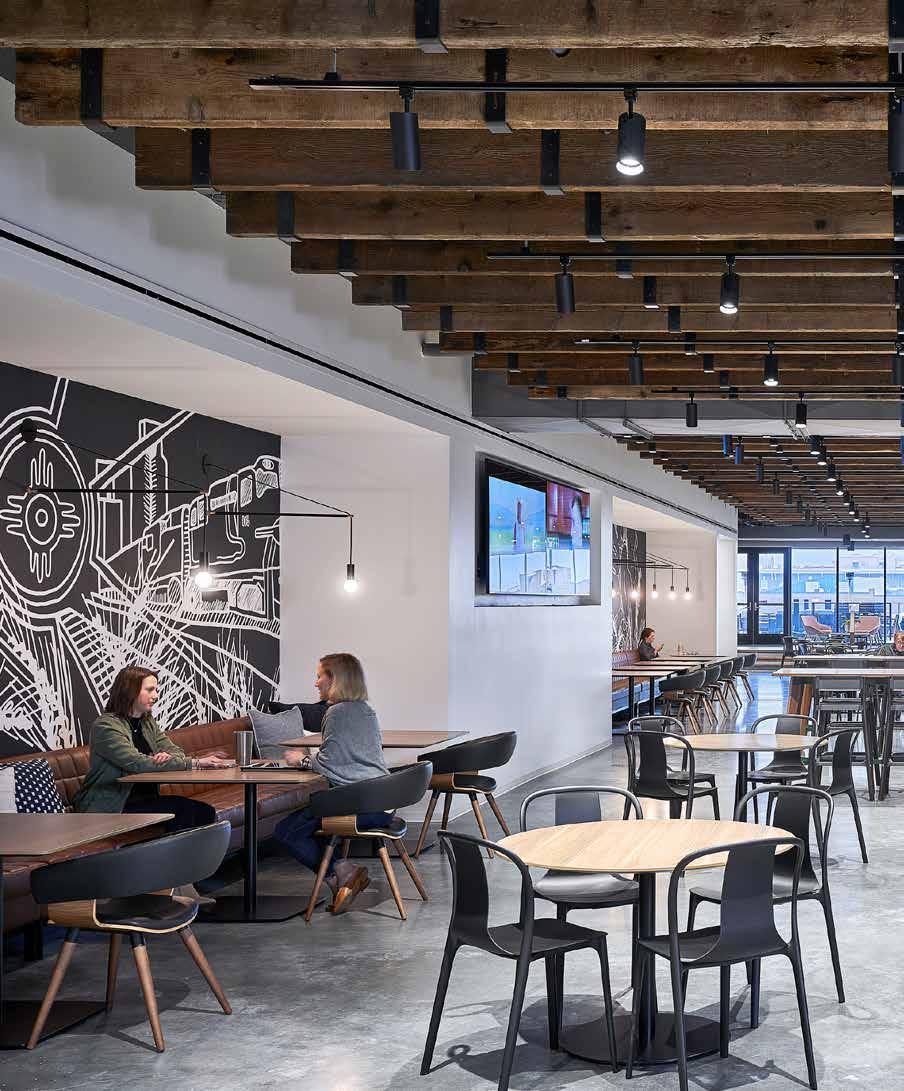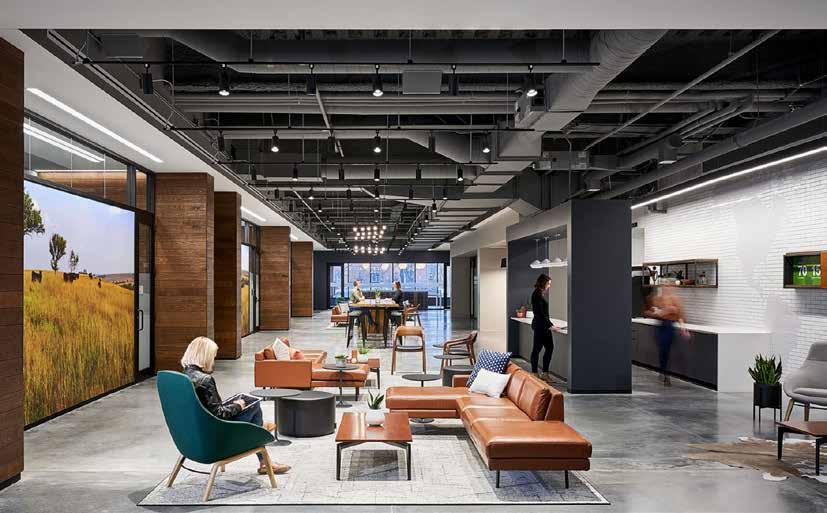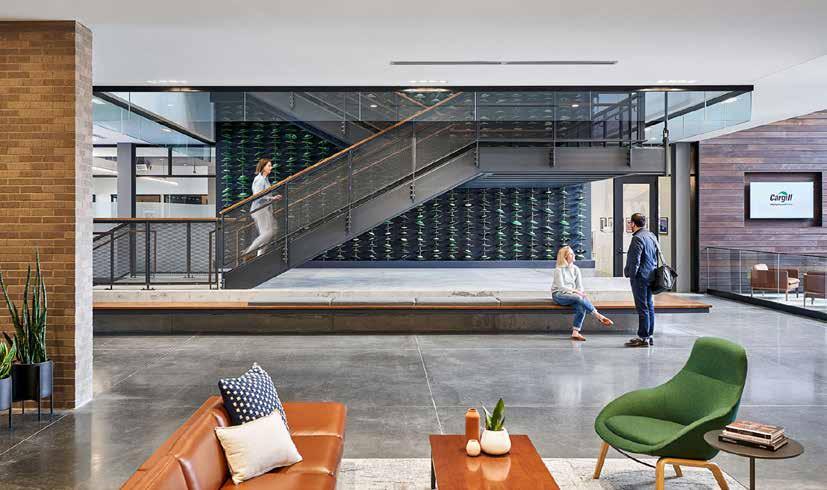
4 minute read
ARCHITECTURE
Telling a Story Through Design.
While storytelling is having a cultural moment, it’s much more than a buzzword. It’s one of the oldest communication techniques in human history and one of the most effective ways to reach people and move them with your message. It’s a tool to influence, entertain, sell, and captivate.
Advertisement
But storytelling isn’t just saved for writers, politicians, and public figures. Storytelling is integral to brand building and design. Whether it’s a workplace, healthcare facility, sports stadium, or airport, we plan for how clients, consumers, and visitors will experience and engage with the built environment through the lens of the destination’s story. For customers, patients, and fans, story-based design informs. For employees, it inspires.
HOW DOES STORYTELLING IMPACT YOUR SPACE?
There is rarely a space that functions for a singular purpose. Storytelling is key to balancing the needs of multiple user groups. Even in corporate workplaces, we’re thinking about how each and every user group will experience the space. In addition to material choices and bold design features, branding and environmental graphics are integral tools for communicating the organization’s story and trajectory.
Whether it’s a milk bar for a dairy cooperative or an electric-vehicle display for a power company, design is a powerful tool to tell functional, cultural, and organizational stories.
ASKING THE RIGHT QUESTIONS
When we take our clients through storytelling exercises, we encourage them to name the organization’s greatest challenges, identify their audiences, lay out a clear plan, and ensure there is a call to action that manifests in the space. It’s important to get past our assumptions to get to the heart of the brand story. In a narrative, following this guide to storytelling is simple. In a physical space, it becomes more complex.
As you think about your space or brand, some questions you can ask leaders in your organization include:
• What is the problem your company or organization solves and who helps solve that problem? • Who will be using this space? Who are we talking to and how have they connected to your brand story in the past? • What is your vision for the future of your organization? • What do you want to happen when people experience your space or interact with your brand? • How can your space be leveraged as a part of company strategic goals, brand, and culture? What specific elements can support this story? • How much of your organizational story is based on current initiatives and values, future aspirations, or company history?

By asking the right questions, we can build the framework for the design and create a set of priorities that serve as the guardrails for each and every design decision.
STORYTELLING IN ACTION
At KCP&L Connect, the electric utility company’s space story focused on building relationships between the brand and its customers to educate and inspire. Located near 18th and Vine on the city’s east side, the retail space gives customers a destination for bill pay, while simultaneously educating them on ways to reduce their bill costs. Experiential design elements supported this larger story through mobile kiosks that educate through interaction on topics like energy-efficient lighting, thermostat options, and electric cars; a kid’s play area with educational, light-up displays; and a demonstration kitchen and classroom.
In Wichita, the design of Cargill’s new Protein division headquarters in the heart of Old Town honors the company’s farm-to-fork ethos and tells the story of the working farms within the company’s supply chain. The building tells the story of families feeding families and the legacy of Cargill’s local roots and global impact through the use of local artwork, a material palette that reflects agrarian culture, commissioned photography that is tailored to Cargill Protein, and installations made from materials that directly relate back to farmers, ranchers, and the regional landscape.

The building tells the story of families feeding families and the legacy of Cargill’s local roots and global impact through the use of local artwork, a material palette that reflects agrarian culture, commissioned photography that is tailored to Cargill Protein, and installations made from materials that directly relate back to farmers, ranchers, and the regional landscape.
In each of these spaces, the success can be attributed to storytelling. Good design is the intersection of story and space. Without a story, environments can feel devoid of warmth and authenticity; however, with thoughtful planning, discovery, and proper interpretation, we can create compelling experiences by bringing brand stories to life, giving a clear and concise look inside what makes your organization tick.
Janelle Heimburger Bethany Foss
ABOUT THE AUTHORS
Janelle Heimburger is an interior designer at HOK, with deep experience designing high-impact corporate interiors and hospitality spaces. Bethany Foss is a senior design consultant with HOK, working with the firm’s Experience Design practice to bring stories to life through authentic, branded experiential spaces.






